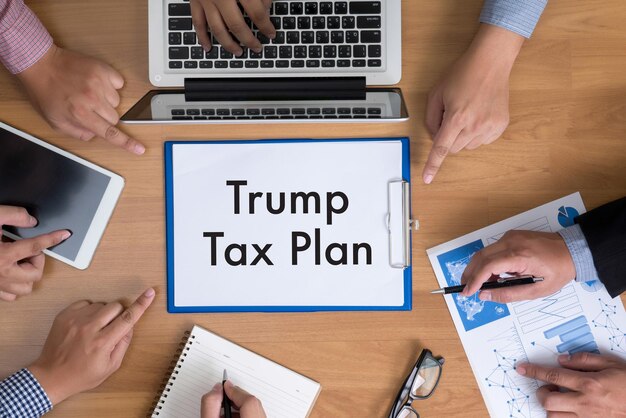Did Trump Eliminate FAFSA? What You Need to Know About Financial Aid Changes
When contemplating how former President Donald Trump's policies impacted FAFSA—Free Application for Federal Student Aid—it's critical to unravel the complexities of financial aid. For students and families considering college, understanding these factors can significantly influence education planning. Let’s explore whether Trump altered or eliminated FAFSA and how those changes might affect financial aid.
🎯 Understanding FAFSA and Its Role
FAFSA, the Free Application for Federal Student Aid, is a critical tool for college students in the United States. It determines eligibility for federal grants, work-study funds, and loans. Importantly, many states and colleges use FAFSA data to award non-federal aid. Completing the FAFSA is a yearly task for students seeking financial support to pursue higher education.
Why FAFSA Matters
- Access to Federal Aid: Federal grants like the Pell Grant are essential sources of funding for students. FAFSA is the gateway to these resources.
- State and Institutional Aid: Beyond federal support, states, and colleges rely on FAFSA to distribute their own aid programs.
- Student Loans: FAFSA is used to determine eligibility for federal student loans, which often come with more favorable terms compared to private loans.
🏛️ Trump Administration's Impact on FAFSA and Education Policy
While there were notable discussions and proposals related to higher education during Trump’s presidency, there were no significant moves to eliminate FAFSA outright. However, several policy adjustments and proposals were worth noting.
Proposed Changes and Initiatives
- Simplification Attempts: The Trump administration aimed to simplify the FAFSA process. Proposals included reducing the number of questions and encouraging data sharing between the IRS and FAFSA to streamline applications.
- Pell Grant Expansions: There was a push to expand and make Pell Grants available year-round, providing more flexibility and opportunities for students to continue their education without interruption.
- Regulatory Rollbacks: Some of the changes included reversing certain regulations of the Obama era, such as the Borrower Defense Rule, impacting how disputes over loan discharges were handled.
Fact-Based Context: Did Trump Get Rid of FAFSA?
Despite various proposals affecting higher education, Trump's policies did not result in the elimination of FAFSA. The application process, though slightly reformed to encourage ease of use, remained intact. Efforts were primarily directed at streamlining the process and offering more funding flexibility with existing federal aid programs.
📋 Key Changes in Education Policy During Trump Era
The overarching themes of Trump's education policy centered on deregulation, promoting school choice, and providing states more control over educational practices. Here are some educational policy highlights:
- School Choice Expansion: There was strong advocacy for expanding school choice, including charter schools and voucher programs, aiming to give parents more options for their children’s education.
- Higher Education Deregulation: In line with broader deregulation strategies, there was a consistent push to remove what the administration considered burdensome regulations impacting colleges and universities.
- Focus on Vocational Education: There was a renewed emphasis on promoting vocational and technical education as viable alternatives to traditional college paths.
🎓 The Impact on Students and Families
While eliminating FAFSA wasn't on the agenda, understanding the shifts in education policy during this period is crucial:
Practical Effects
- No Major Disruptions: Although policies attempted to simplify processes, the core FAFSA structure remained, allowing students to continue accessing necessary financial aid.
- Potential Ease of Application: Efforts to simplify the application may have alleviated some barriers for students applying for aid, potentially increasing the number of submissions.
- Navigating Federal Aid: Families may have needed to stay informed and adaptable as policy adjustments could influence aid distributions and qualifications.
🗺️ Navigating Financial Aid Post-Trump Administration
Understanding the enduring impact of Trump’s policies requires looking at how subsequent administrations have approached financial aid and education reform.
Current Landscape and Future Prospects
- Biden Administration Stance: Focus has shifted to further simplifying FAFSA, expanding Pell Grants, and tackling student loan debt, with initiatives aimed at more significant reforms.
- Continued Financial Planning Importance: Given ongoing changes, staying vigilant and informed will empower students and families to optimize financial aid opportunities.
📖 Conclusion: Empowerment Through Understanding
Navigating the complexities of FAFSA and financial aid demands keen attention and understanding of policy changes. Trump’s administration did not eliminate FAFSA, but the initiatives and proposals it introduced laid groundwork affecting subsequent reforms. As administrations evolve, the focus remains on simplifying access and easing the burden of higher education costs.
Quick Tips for Managing FAFSA and Financial Aid:
- 📝 Stay Updated: Continuously monitor legislative changes in education policy to understand how they may affect your aid options.
- 🕒 Apply Early: Completing the FAFSA early can maximize your chances of receiving aid, as some programs offer funds on a first-come, first-served basis.
- 📊 Explore All Options: Beyond FAFSA, look into scholarships, grants, and other financial aid opportunities available through states and private organizations.
🔑 Key Takeaways:
- FAFSA remains a crucial part of federal student aid.
- Simplification efforts have aimed to make the process more accessible.
- Understanding shifts in policy helps students capitalize on available opportunities.
By maintaining awareness of these policies and their impacts, students and families can better navigate the financial aid landscape and make informed decisions that align with their educational aspirations.

Related Topics
- Are International Students Eligible For Fafsa
- Can An International Student Apply For Fafsa
- Can Fafsa Be Used For Trade School
- Can Fafsa Check Your Bank Account
- Can Fafsa Cover Housing
- Can Graduate Students Apply For Fafsa
- Can I Add Another Contributor To Fafsa
- Can I Apply For Excelsior Scholarship Through Fafsa
- Can I Change My Fafsa Account To Parent
- Can I Delete a Fafsa Account